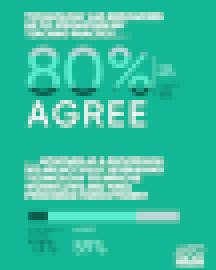Kathy Noble was my son Colin’s special-education teacher. Back in 1999, when Colin was 10, my conversations to date with doctors, therapists and psychologists had been largely focused on Colin’s disability.
But my discussions with Ms. Noble focused on Colin: his unique sense of humor, his all-consuming fascination with Harry Potter books, and his uncanny ability to catalog facts regarding the myths and folktales of cultures across the globe.
Ms. Noble had an amazing talent that all the best teachers have—she brought out the strengths of each and every child in her classroom. She was able to give that personal time to each child, building in time for the inevitable outburst or behavioral roadblock, and creatively adapted her lesson plans to foster a positive learning environment. Ms. Noble also made it her job to know what made Colin tick. She personalized her instruction around his passions as well as his developmental needs, met his stubbornness with patience, and worked incredibly hard to reveal his extraordinary gifts. For him, each hard-won level of confidence-building achievement would be the foundation for the next.
When we think about how to make learning most effective, it is easy to get stuck in a maze of school reform initiatives, or become enamored with the latest edtech trend. We can lose sight of what really matters—the relationship between teachers and students. And data supports the critical nature of this bond. In Houghton Mifflin Harcourt’s fourth annual Educator Confidence Report, based on a survey of more than 1,200 U.S. teachers and administrators conducted by MDR and created in collaboration with YouGov, 94 percent of educators say that the most important quality of the learning landscape is the human connection a teacher makes with a student.

Today, demands on our teachers are greater than ever. Our report reveals that while educators are generally optimistic about the teaching profession, their concerns are deeply felt and set against a challenging national backdrop. Among the top concerns this year were school safety, funding and salaries, differentiating instruction to meet the needs of diverse learners and the implications of teacher accountability requirements. Teachers and administrators are seeking ways to balance a hopeful outlook with day-to-day challenges.
Just like in all areas our lives, it is natural to think about where and how technology can help. For years, we have been working to deliver the promise of technology in the classroom, and we have seen pockets of success. Still, more than half of educators (53 percent) worry that a focus on using technology for learning is coming at the expense of personal connections between students and teachers.

I believe that to truly realize the promise of education technology, we must focus on “purposeful technology” that extends teachers’ abilities—not replaces them. Technology that isolates children and dehumanizes the learning environment comes at a great cost to the student agency achieved through discourse and project-based learning. We need to focus on learning that is supported by technology, not mechanically mediated through technology. Indeed, I believe the following three ways purposeful technology can have a profound difference in the classroom.
Building Teacher Capacity
Throughout the day, every teacher is pulled in a thousand different directions. Some of those tasks, like grading, can be time-intensive, and drain a teacher’s productivity and emotional energy.
Take writing, for example. Within an average-sized classroom of 25 students, there is a diverse mix of abilities, ranging from those students who are independent, reflective writers to those who are below proficiency and struggle with the craft. Grading these assignments requires time, especially in larger class sizes, and teachers do not always have the capacity to assign ample writing practice. This can compound the gap in writing proficiency.
But what if we employed machine learning and peer reviews for writing evaluation? We then could help teachers build more fluent, independent writers, while freeing up teacher capacity for more targeted and meaningful feedback. The tools can also alleviate other time-consuming administrative pressures, such as entering grades and tracking student growth over time. While 44 percent of educators in our report say they have experienced time savings because of technology, 72 percent agree that the potential to truly improve workflows with technology is not yet fully realized.

Deep Insights into Learning
With advancements in learning science and data analytics, we can capture deeper insight into student learning. This can help teachers better answer questions like: Where are my students on a pedagogical sequence of skills? What do they know, and are they ready to learn next in the sequence?
Not only will such data allow teachers to match curricular resources and instructional activities to students’ needs, it can also measure student growth and help educators predict how well students will perform on tests and assignments. In fact, according to the report, 45 percent of teachers report feeling optimistic about actually being able to use data to inform and improve instruction (rather than just collecting it for collection’s sake), and 52 percent say they have experienced ways in which technology helped them deliver differentiated, individualized instruction.
Targeting Instruction
We must also focus on how technology can support flexible student groupings, so teachers can differentiate and personalize their instruction in an agile, engaging and efficient manner while simultaneously targeting the needs of students at different grade levels.
The report found that differentiating lessons for special education and students who require intervention fell in the top five items of common concerns amongst teachers. Additionally, with potential time savings from technology, teachers report the need to refocus that time first and foremost on students: 76 percent say they will use that extra time to work with students that need intervention, and 57 percent plan to increase one-on-one time with their students.
As we look to deliver on the promise of education technology, we must not lose sight of the fact that the most effective learning solution won’t be developed in the Silicon Valleys of the world. It already exists. It’s teachers like Ms. Noble, who work tirelessly to uncover a student’s unique talents and provide the vital spark to propel their learning forward.


